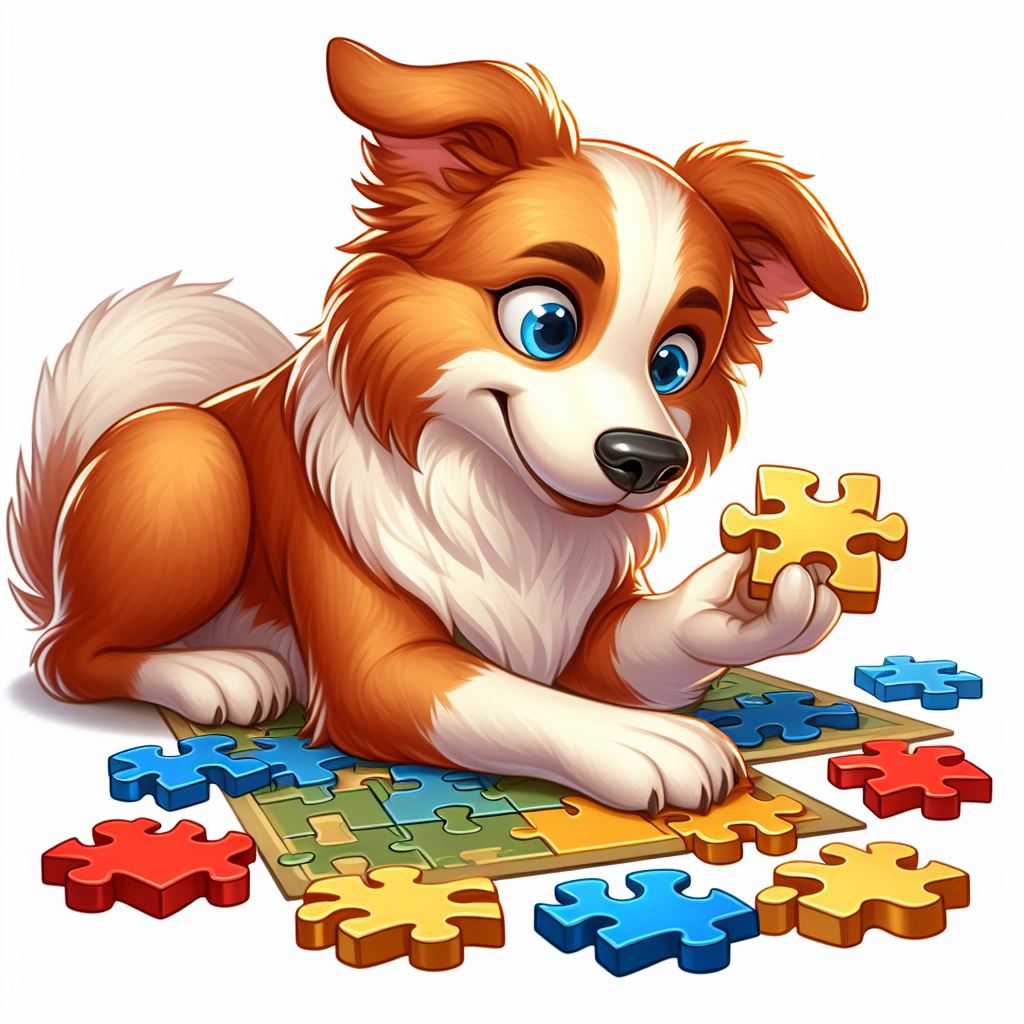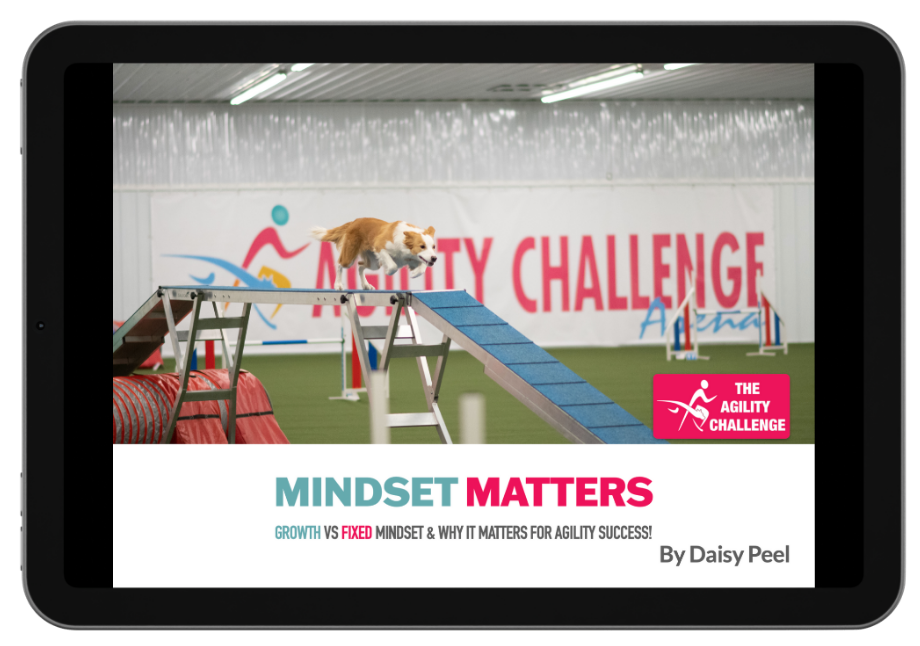We’ve heard it said in so many ways:

- Take it a little bit at a time
- Break it down in to bite size chunks
- One step at a time
- Be a splitter, not a lumper
This advice, to break things down, works, because it reflects the way our brains learn. Every skill is built out of smaller pieces, or chunks. And yes, chunks and chunking are actually terms used by scientists who research how we learn!
Chunks are to skill what letters of the alphabet are to language.
Daniel Coyle
Alone, a letter is nearly useless, but when we use letters to make words, and words to make sentences, and sentences to make paragraphs, we can create something complex and beautiful. Our dog training and handling skills are no different. A great agility run is merely a creation made up of tiny skills, which then make up larger skills, and so on and so forth.
To start the process of chunking, first, engrave the blueprint of the skill on your mind. Take a look back to Tip #2, from earlier this year. Then, ask yourself:
- What is the smallest single element of this skill that I can master?
- What other chunks link to that chunk?
Practice one chunk by itself until you’ve mastered it. Then, connect more chunks, one by one, just the same way you’d combine letters to form a word. Then, combine those chunks to make even bigger chunks, and so on. One example of chunking would be course walking – in a course of 20 or so obstacles, there will likely be at least 4-5 large ‘chunks’. Instead of trying to memorize a whole course, work on memorizing one 4-5 obstacle chunk. And then, another. And then a third, and a fourth and a fifth, if necessary. Instead of having to manage one BIG 20 obstacle chunk, you now only have to manage 4-5 chunks of 4-5 obstacles each.
Another example of chunking would be, let’s say, seesaw training. Break down all of the elements of the seesaw: the movement, the height, the noise, the stationary position at the end that you want. Work on each of those chunks separately, and then put those chunks together for one larger chunk that you’ll call your “seesaw behavior.”
With chunking, you don’t even necessarily have to work on chunks in the order that they’ll ultimately be combined into larger chunks. You can memorize the last part of a course first, or the middle part. You can memorize the most difficult part of a course first, and then work your way out to other parts of the course. You can work on the elements of seesaw training entirely independent of one another, on obstacles that don’t even look like a seesaw, and still teach your dog the elements or chunks of behavior that are required to eventually perform a seesaw. When you’re chunking, and thinking about breaking things down, you’re thinking about those pieces more, instead of just working on autopilot, and, thinking is good for learning – autopilot isn’t.
As Daniel Coyle says in The Little Book of Talent – “No matter what skill you set out to learn, the pattern is always the same: See the whole thing. Break it down to its simplest elements. Put it back together. Repeat.”

